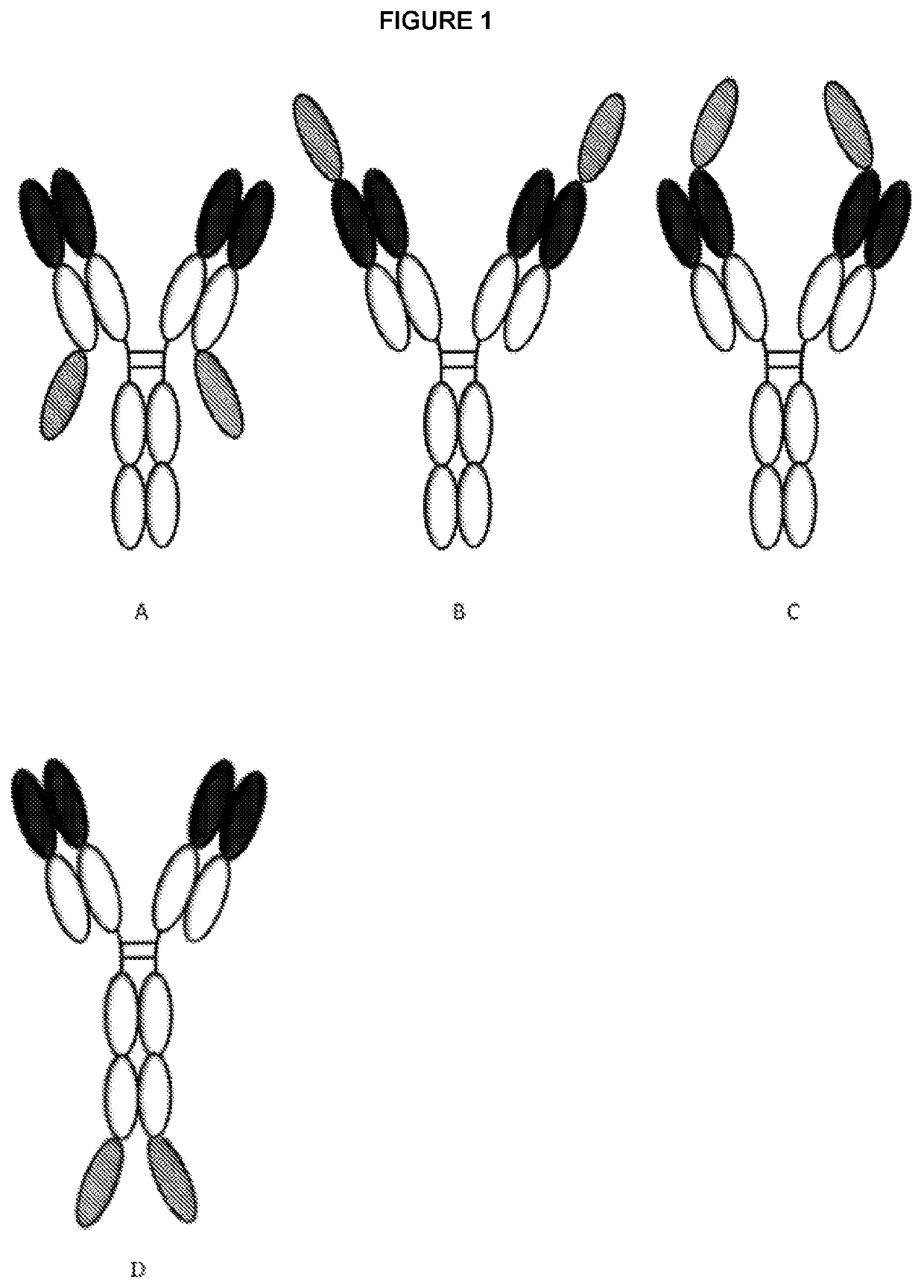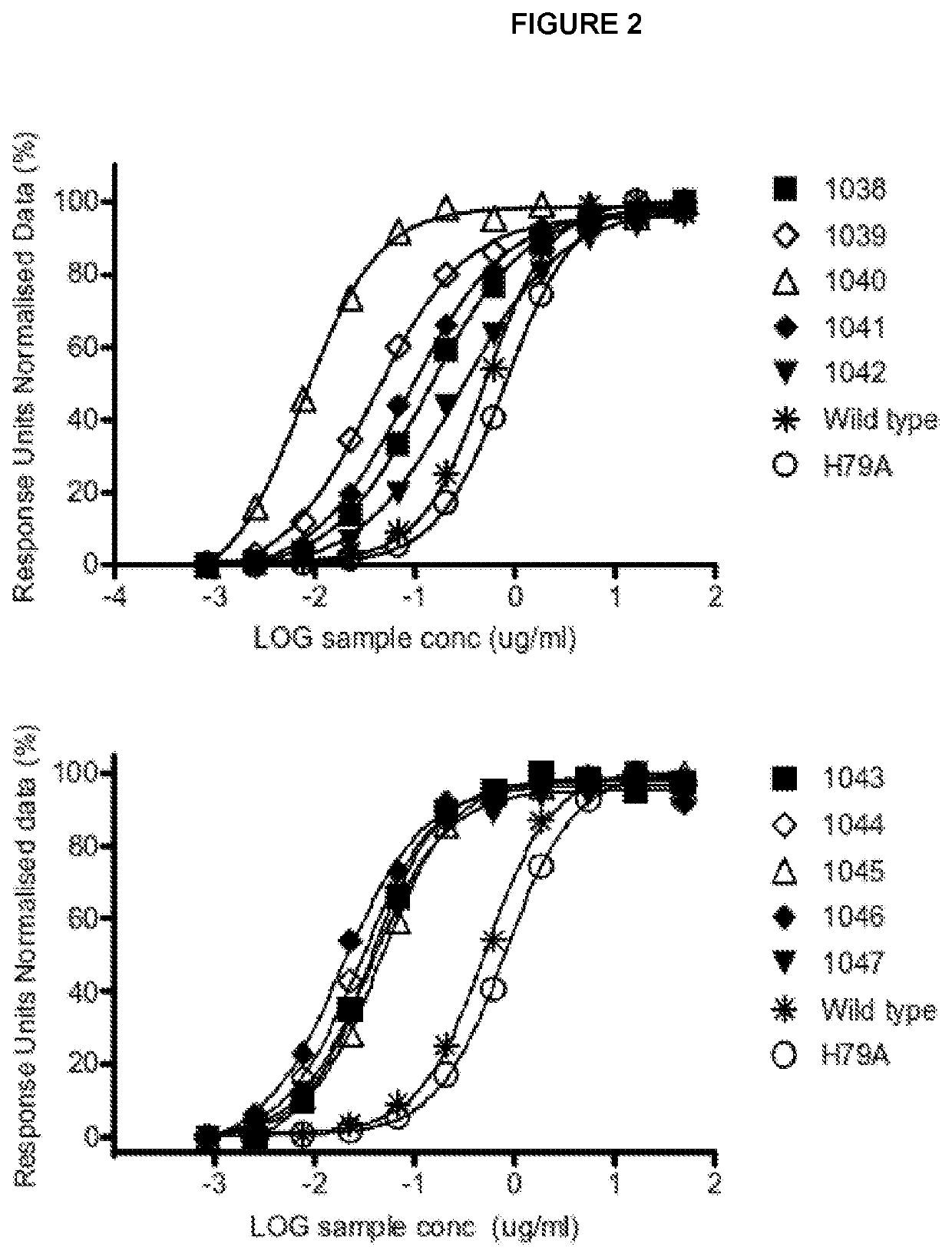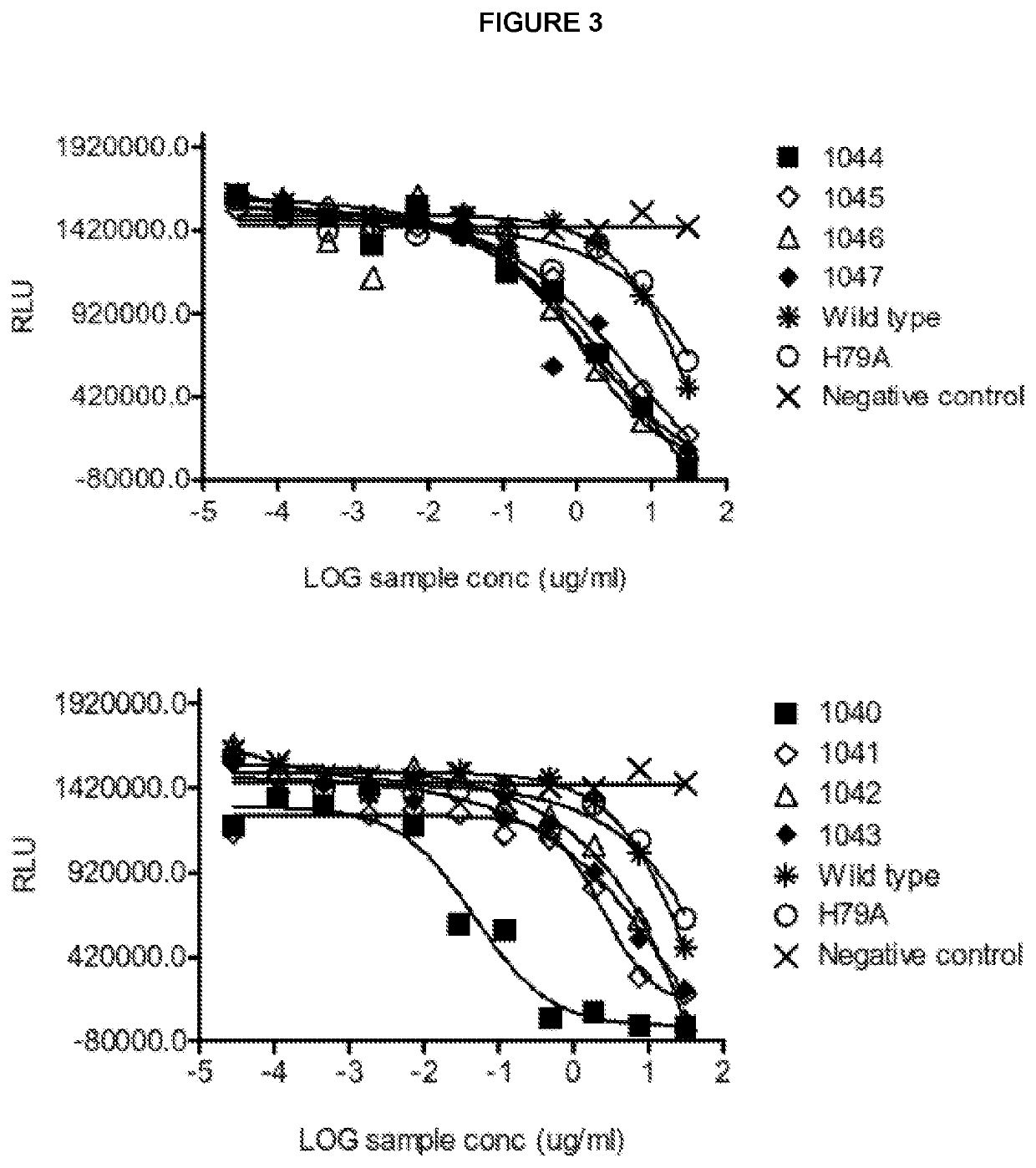Novel polypeptides
a polypeptide and polypeptide technology, applied in the field of bispecific polypeptides, can solve the problems of inefficient anti-tumor response, ineffective signaling, and premature deaths in the developed world, and achieve the effect of promoting t cell activation and enhancing immunity in patients
- Summary
- Abstract
- Description
- Claims
- Application Information
AI Technical Summary
Benefits of technology
Problems solved by technology
Method used
Image
Examples
example 1
nding Domains
[0546]CTLA-4 binding domain polypeptides were selected and expressed as described in WO 2014 / 207063 (see Examples) and were assayed for binding to CTLA-4 by at least one of ELISA and surface plasmon resonance as described below.
[0547]Binding ELISA
[0548]96-well flat bottom high binding plates (Greiner, #655074) were coated with either CTLA4-Fc (Fitzgerald, #30R-CD152) or CD28-Fc (R&D systems, 342-CD) by incubating overnight at 4° C. The plates were washed (Wash buffer: PBS+0.05% Tween 20 (PBST) Medicago, #09-9410-100) and then blocked in PBST+3% BSA (Merck, #1.12018.0100). The plates were washed again and sample or controls (serially diluted 1 / 5 from 200-0,001 μg / ml) were added to the wells. The samples were incubated for 1 h at room temperature and then washed. Detection antibody, goat-anti-human IgG Fcγ-HRP (Jackson, #109-035-098) was added and the plates were subsequently developed using SuperSignal Pico Chemiluminescent substrate (Thermo Scientific, #37069) and detec...
example 2
ctivity to Murine CTLA-4 of Exemplary Polypeptide from Clone 1040
[0554]The relative affinity for murine and human CTLA-4 of an exemplary mutant CD86 molecule 1040 was investigated using an inhibition ELISA binding assay. The 1040 molecule used in these experiments was conjugated to an anti-CD40 antibody as part of a bispecific molecule. The CTLA-4 binding properties of the CD86 molecule are not affected by this conjugation (data not shown).
[0555]In brief, 96-well flat bottom plate high binding plates (Greiner #655074) were coated with human CTLA-4 (Fitzgerald) incubating overnight at 4° C. The plates were washed (Wash buffer: PBS+0.05% Tween 20 (PBST) Medicago #09-9410-100) and then blocked in PBST+3% BSA (Merck, #1.12018.0100).
[0556]The sample (exemplary CD86 mutant) was pre-incubated at room temperature for 1 hour with soluble biotinylated human CTLA4 (Fitzgerald #30R-CD152) or soluble murine CTLA-4 (R&D systems) at different concentrations (serial dilutions 1 / 4 from 30000 to 0.3 ...
example 3
isation of OX40 Antibodies
[0558]Characteristics of exemplary OX40 antibodies are summarised in Table 3.1 below.
TABLE 3.1DosehuOX40DissociationAssociationAssociationCDR H3responseM. mulattabindingconstantrate constantrate constantlengthELISAT-cellOX40FACSHydrophathyIsoelectricKDkakdAntibody(IMGT)(IgG)agonistbinding(CHO)indexpoint(M)(1 / Ms)(1 / s)1166 / 116710YesYesYes−0.3929.113.22E−109.01E+042.90E−051170 / 117110YesYesYes−0.4159.112.50E−101.45E+063.63E−041164 / 113511YesYesYes−0.3989.213.08E−102.51E+057.73E−051168 / 113511YesYesYes−0.4049.193.27E−105.18E+051.69E−041482 / 14839YesYesYes−0.3819.197.53E−107.76E+055.84E−041490 / 113511YesYesYes−0.4079.183.07E−103.87E+061.19E−031514 / 151514YesYesYes−0.3999.116.40E−102.57E+051.64E−041520 / 113517YesYesYes−0.3949.185.55E−106.20E+053.44E−041524 / 152510YesYesYes−0.3919.118.11E−101.71E+061.39E−031526 / 152715YesYesYes−0.3888.994.30E−104.35E+051.87E−041542 / 113511YesYesYes−0.4119.24.63E−102.16E+051.00E−04
[0559]Two anti-OX40 antibodies were synthesised solely for us...
PUM
| Property | Measurement | Unit |
|---|---|---|
| size | aaaaa | aaaaa |
| structure | aaaaa | aaaaa |
| flexibility | aaaaa | aaaaa |
Abstract
Description
Claims
Application Information
 Login to View More
Login to View More - R&D
- Intellectual Property
- Life Sciences
- Materials
- Tech Scout
- Unparalleled Data Quality
- Higher Quality Content
- 60% Fewer Hallucinations
Browse by: Latest US Patents, China's latest patents, Technical Efficacy Thesaurus, Application Domain, Technology Topic, Popular Technical Reports.
© 2025 PatSnap. All rights reserved.Legal|Privacy policy|Modern Slavery Act Transparency Statement|Sitemap|About US| Contact US: help@patsnap.com



